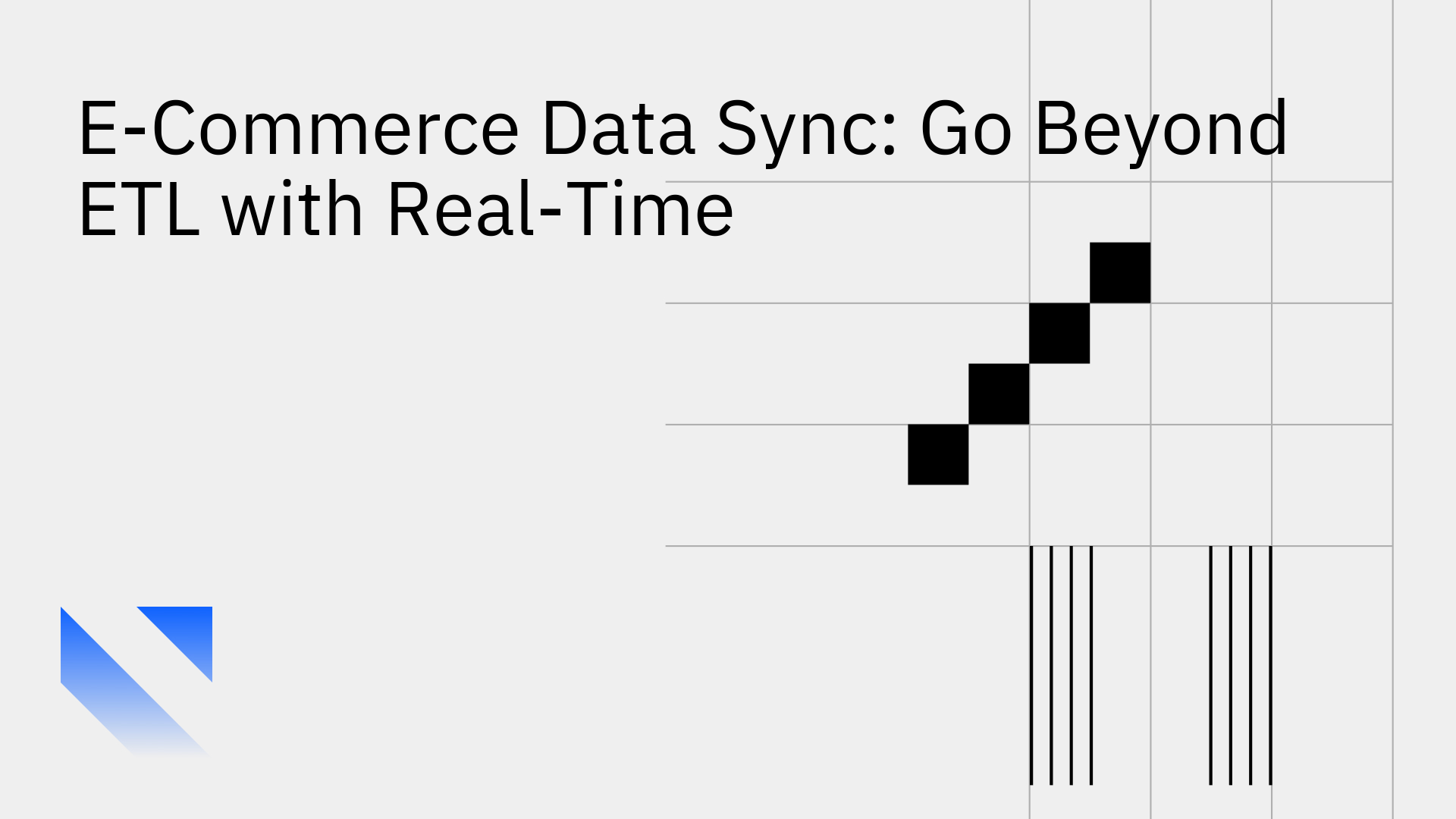
In the hyper-competitive e-commerce industry, customer experience and operational efficiency are not just goals; they are survival requirements.
For years, traditional data integration methods like ETL (Extract, Transform, Load) formed the backbone of data operations. However, their reliance on batch processing creates data latency, rendering them inadequate for the demands of modern e-commerce. To stay competitive, businesses must evolve to real-time data integration for the e-commerce industry.
ETL is a foundational data engineering process where data is extracted from various sources, transformed into a consistent and usable format, and then loaded into a target system like a data warehouse [1]. While historically important, its architecture presents critical flaws for real-time operations.
These limitations make it clear that while ETL has its place, businesses must also consider more modern approaches like ELT for real-time operational data integration.
Real-time data integration syncs information between systems nearly instantaneously—within milliseconds or seconds—as events happen. This stands in stark contrast to the scheduled, batch-based nature of traditional ETL. The difference isn't just about speed; it's about operational capability, as different ETL tools offer vastly different real-time vs. batch performance.
A real-time data architecture unlocks immediate, tangible advantages [3]:
Real-time sync connects your e-commerce platform (e.g., Shopify) with your ERP (e.g., NetSuite) and warehouse management system (WMS). When a customer makes a purchase, the inventory count is instantly updated in the ERP and WMS, preventing another customer from buying an item that just went out of stock. This ensures you can track stock counts across all systems without delay [5].
When an order is placed on your storefront, it is instantly created in your accounting system or ERP. This immediate data flow accelerates invoicing, simplifies revenue recognition, and eliminates the hours of manual data entry and reconciliation previously required from your finance team.
By syncing customer and order data in real-time to a CRM like HubSpot or Salesforce, support agents get a complete, up-to-the-minute view of every customer's history and recent interactions. This empowers them to resolve issues faster and more effectively, without having to toggle between different applications to find the information they need.
True operational excellence requires more than just one-way, real-time data pipelines. Stacksync delivers the next evolution: bidirectional synchronization.
Two-way sync means data flows in both directions between connected systems, creating a single, authoritative source of truth across your entire tech stack.
For example, a stock update made by your supply chain team in the ERP automatically reflects on your Shopify store's product page. Conversely, a sale on Shopify instantly deducts that inventory from the ERP. All systems remain perfectly and perpetually consistent without manual intervention.
Stacksync is purpose-built to overcome the limitations of traditional ETL and empower modern e-commerce businesses. While there are many data integration platforms for real-time synchronization, Stacksync focuses on operational resilience.
While ETL was a foundational tool, its batch-based architecture is a liability in the fast-paced world of modern e-commerce. Real-time data integration is no longer a luxury, it is a core requirement for maintaining accurate inventory, delivering superior customer experiences, and achieving operational excellence. Stacksync provides the definitive solution, moving you beyond the constraints of ETL with its powerful, reliable, and real-time two-way synchronization capabilities. By exploring various real-time data integration tools, you can find the best fit for your operational needs.
Ready to leave ETL behind? See how Stacksync can transform your e-commerce operations. Book a demo today.